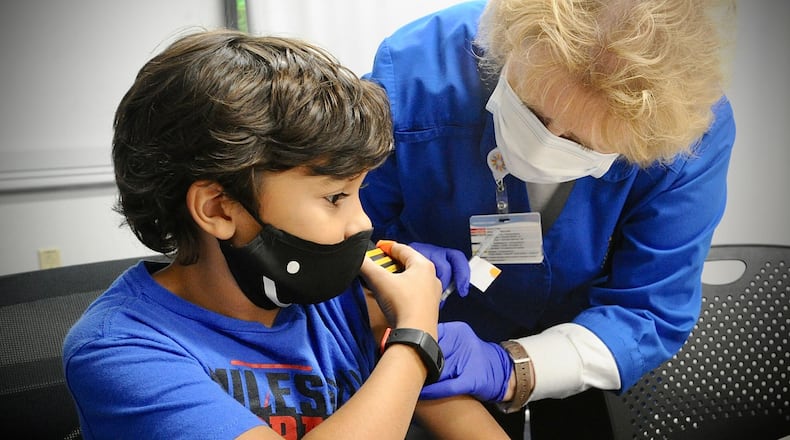“For kids less than 5, one of the driving forces for them getting into their pediatrician’s office on a regular basis has to do with getting their immunizations,” Mezoff said. “Since these immunizations can be given along with the other ones, it might make sense that’s how these are looked at as part of their routine schedule, and so we’re trying to tie it to that as best we can.”
He said Dayton Children’s has in the past held large-scale vaccination events, but it’s unclear if there will be that kind of demand.
Children under 5 are the last age group to become eligible for shots and COVID-19 vaccines are still free to all people living in the U.S., regardless of immigration status or health insurance.
For small children ages 6 months to 5 years, there’s a two-shot series from Moderna Inc. administered one month apart. For kids 4 years and younger, there’s also a three-shot series from Pfizer Inc. and German partner BioNTech SE: The first two doses are given three weeks apart, and the third dose eight weeks after the second dose, according to the FDA.
Moderna’s two-shot vaccine was 51% effective at preventing COVID-19 in children under 2 years and 37% effective for those ages 2 to 5, the FDA said. A preliminary analysis of Pfizer’s vaccine for the youngest kids found it was 80% effective in preventing COVID-19 infections among those 6 months to 4 years, with 10 infections occurring among all participants.
The FDA said Friday that the effectiveness data was unreliable because of the low number of cases that occurred in the study participants. Common side effects of Moderna’s shot can include pain, injection-site swelling and fever, the agency said. For Pfizer’s, the most common side effects included irritability, decreased appetite and fever.
Dayton Children’s Hospital will be using the Pfizer vaccines.
“Today is a monumental step forward in our nation’s fight against the virus, with virtually every American now eligible for the protections that COVID-19 vaccines provide,’’ President Joe Biden said in a June 18 statement. The authorizations come “after a rigorous and independent scientific review,” he said.
Although the move will help protect children from infection and serious disease, vaccine hesitancy still looms in the U.S. population where more than 40% of people who qualify for immunization aren’t fully vaccinated, according to the Centers for Disease Control and Prevention.
Health officials have warned that the rate of hospitalization and death for children, particularly during the omicron wave, has been concerning. In January, kids’ COVID-19 hospitalizations surged to record highs.
“It’s fair to say that adults tend to get a lot sicker than children, but it would be wrong to think children can’t get seriously ill. In fact, we’ve had countless number of kids admitted to our ICU over the course of the pandemic, and there have been children within the region who have died of COVID,” Mezoff said.
He said there is reason to believe COVID cases will go up in the fall, especially as kids go back to school.
“Since both of the series take a few months to get the protection to its maximum level, that’s one of the reasons to consider doing things like this now,” Mezoff said. “And again, if you have kids less than 5 or 6 who are going in for routine vaccinations anyway, it would be good to add this to their vaccination schedule as opposed to having to do this separately.”
Those interested in the vaccine can sign up on Dayton Children’s website.
The Associated Press contributed to this story
About the Author

